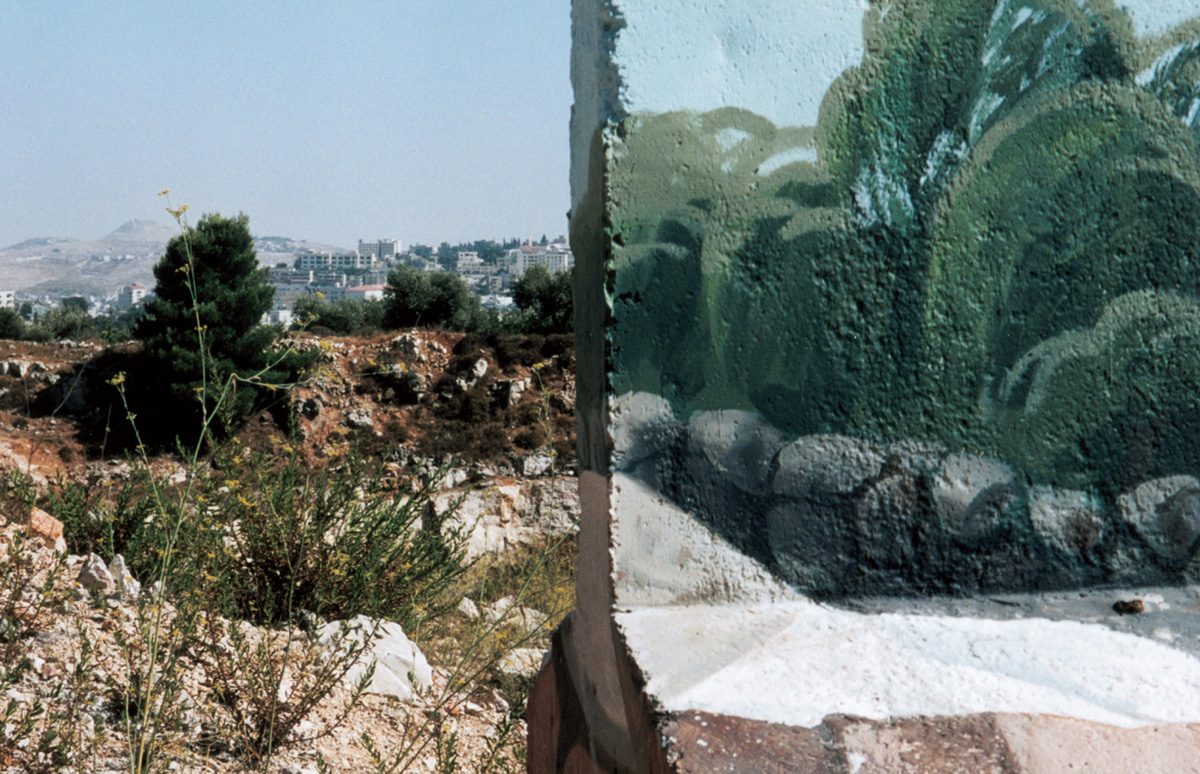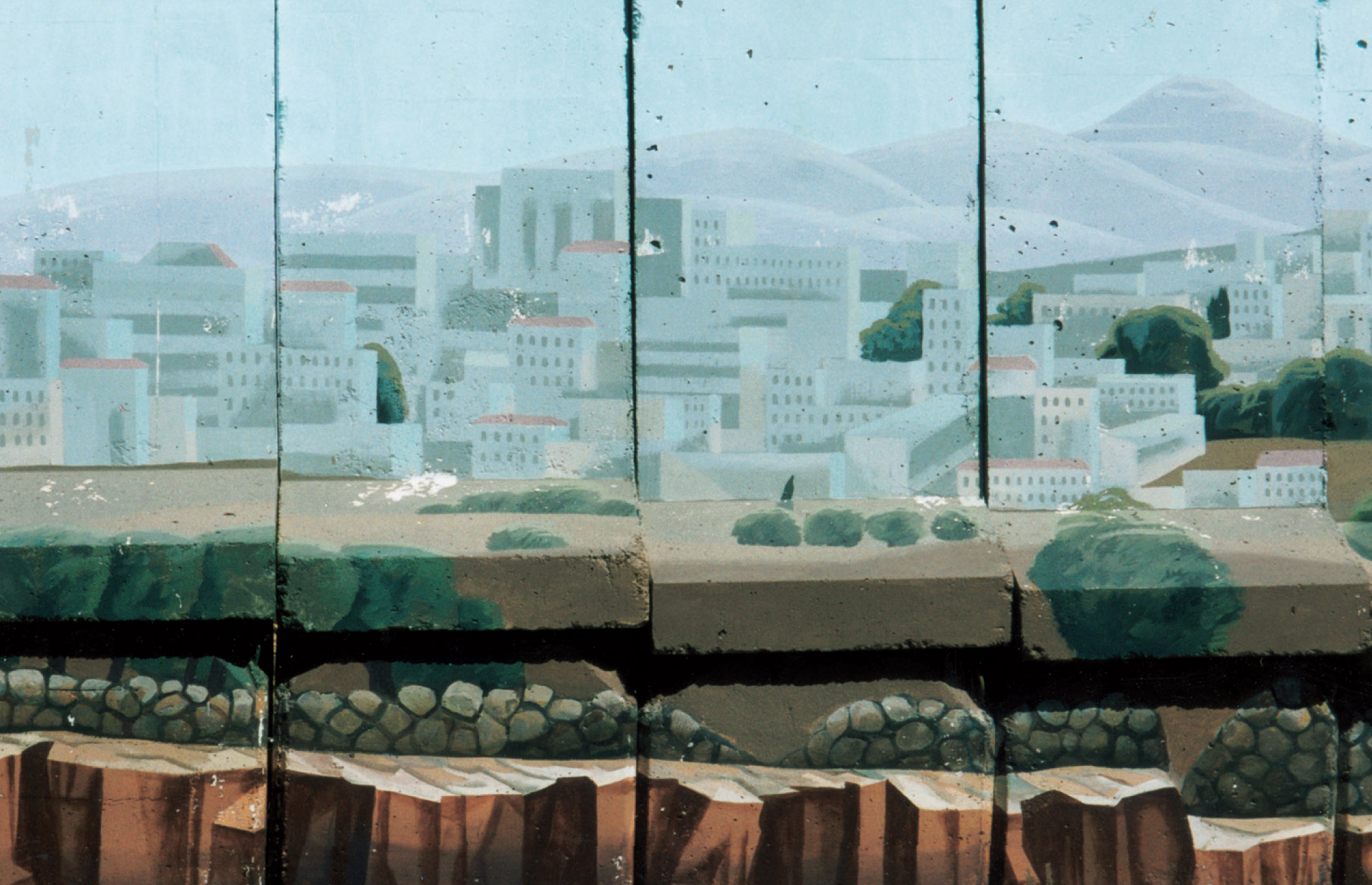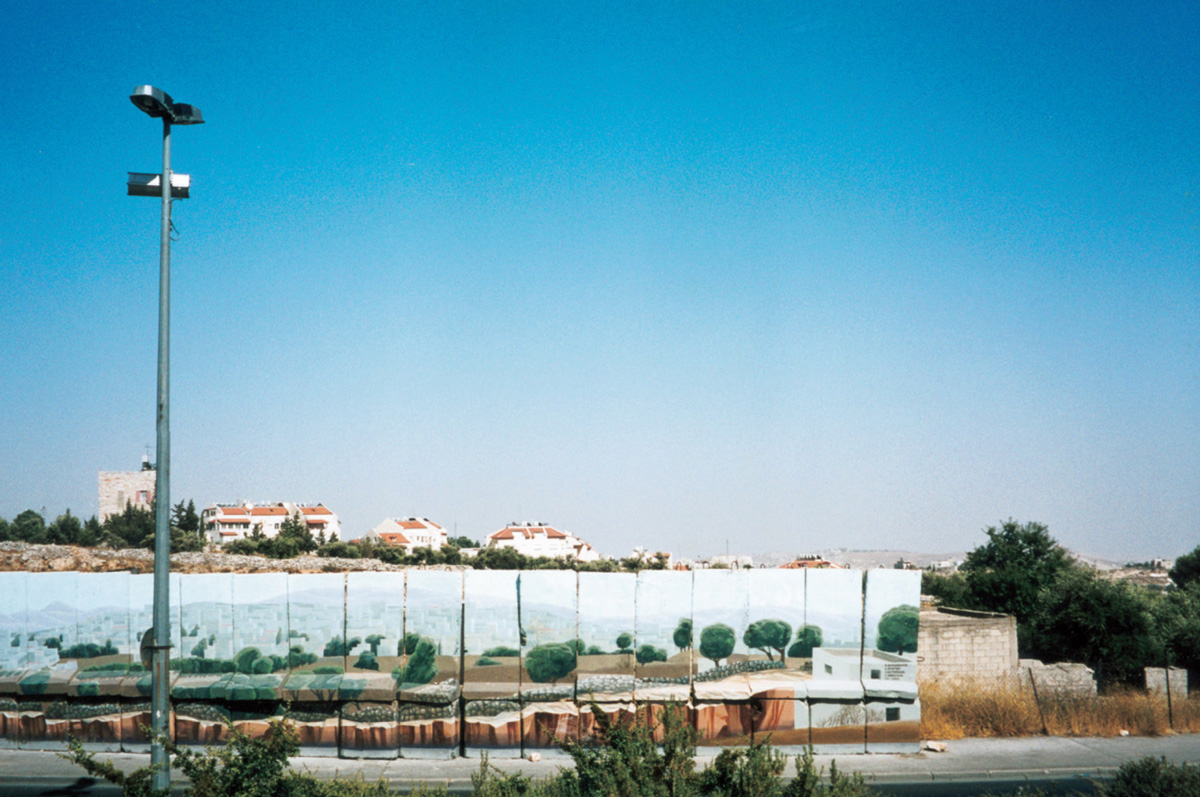Paint Your Troubles Away
A wall with a view in an Israeli settlement
Richard Fleming


Built on high ground, like most West Bank Israeli settlements, Gilo is the largest neighborhood within the Municipality of Jerusalem that lies to the east of the Green Line. Since Israel took control of this hilltop in the 1967 war, more than 30,000 lower- to middle-class Israelis, largely Sephardic Jews and Russian immigrants, have settled there. For many of them, it is less a militant settlement born out of colonial ideology than a place chosen for its convenience, cheap rents, and spectacular West Bank desert views. Until the beginning of the Second Intifada, with the Green Line buried beneath a handsome new ring road that whisks commuters to the Jerusalem outskirts, the inhabitants of Gilo might have been forgiven for forgetting that they live in Palestinian territory.
But one day their picturesque view across the olive groves to the Arab village of Beit Jala began shooting at them. Bullets whistled up the hill into the windows of Gilo’s 1970s apartment blocks. Outraged, the residents sandbagged their windows and demanded Israeli military action. Houses in Beit Jala were duly shelled and destroyed. A multi-million dollar scheme replaced many Gilo windows with bulletproof glass, but this was of little comfort to homeowners concerned about property values and relegated to living in the dark and windowless back rooms of their apartments.
The idea of a wall was controversial. The residents wanted it, but the erection of a concrete barricade along the length of the exposed flank of Gilo would be an admission, unacceptable to the authorities, that the lands on the other side were beyond control. An encircling wall is defensive, not offensive, and a more militant settlement would never have allowed one to be built; the Gilo wall is at odds with the ongoing Israeli policy of containment and expansion. But each nightfall brought a hail of bullets, and the people who live in Gilo were not the sort of settlers eager to trade quality of life for ideology. They had, after all, been enticed to live here by glossy advertising brochures complete with photographs of the very vistas now assaulting them. People took extended vacations. Joggers could no longer run along the road overlooking the valley. In the winter of 2000, the military carted in concrete panels and installed them like a massive three-meter-tall highway median, obliterating the view. From below, down the hillside, which is to say from Beit Jala, the unpainted concrete wall snakes around the ridgetop, gray and foreboding, like a modernist fortress.
A friend tells me that on the Gilo side the concrete panels were at first painted a jolly blue, but so much cement canvas was an invitation to political graffitists. According to the Jerusalem Post, the mural project was the brainchild of Shlomi Brosh, then the head of the culture department of the Municipality. He commissioned eight Russian immigrant artists “to paint the wall with the missing view, in an effort to alleviate some of the ugliness of the concrete slabs.”[1] Clearly the authorities wanted to diminish the sense of capitulation the wall represented. And what better way than to paint scenes of the now-hidden landscape over the concrete panels? The work on the wall is site-specific camouflage. “We did not want to part with the view, but they forced us to. So we copied the view,” Brosh told the Post.

Executed in the style of a Midwestern Italian restaurant fresco, the results are a sanitized simulacrum: the landscape beyond the wall “captured beautifully,” as painters like to say. But on close examination, the paintings do not amount to a realistic portrait. The long and winding trompe l’oeil slab is devoid of Arab inhabitants, and none of the buildings in the distance appears to have been shelled by Israeli tanks. The blurry, distant villages have been settlerized; a disproportionate number of buildings are painted with salmon-tiled gabled roofs, an architectural conceit unknown to the Palestinians, whose villages typically have flat white roofs. The Palestinian “problem” has not been whitewashed but painted out of view.
- Etgar Lefkovits, “Seeing beyond Gilo’s Siege Wall,” The Jerusalem Post Internet Edition, 23 August 2001, at www.jpost.com/Editions/2001/08/23/News/News.33240.html [link defunct—Eds.].
Richard Fleming records sound for documentary films and enjoys taking long walks. Currently he is writing Walking to Guantanamo, a book about crossing Cuba lengthwise. He lives near the water in Brooklyn.